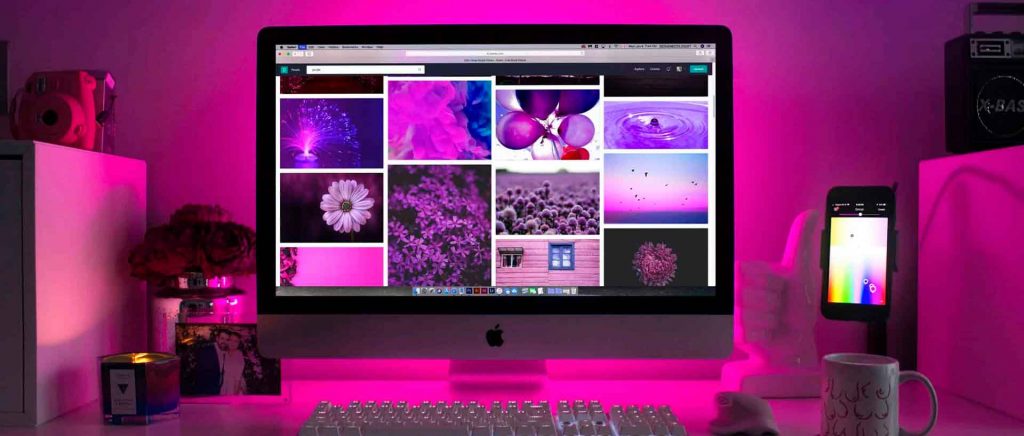The color orange is often associated with happiness and joy. But, what psychological factors influence our attraction to this color?
And what does its popularity tell us about our culture and society? This post will explore some of the meanings and effects of the color orange. Stay with us to learn more.

Psychology of the color orange
Many people like the color orange, but what is it about this particular shade that attracts us? According to recent research, the psychological effects of orange may be responsible for its popularity.
The psychology of the color orange is fascinating and multifaceted, making it a shade that attracts and captivates many. This color, with its vibrant and warm glow, evokes in us feelings of joy, optimism, and energy, attributes that contribute to its popularity.
In color symbolism, orange, with its rich and luminous shade, is often associated with happiness and creativity. It is a hue that evokes positive emotions and stimulates communication, making it an excellent choice for public areas and workplaces where interaction and exchange of ideas are encouraged. This shade of color has the power to revitalize and energize a space, fostering an atmosphere of productivity and cooperation.
Furthermore, the meaning of the color orange also extends to the realm of gastronomy. It has been observed that this color stimulates the appetite, making it especially effective in food marketing. Restaurants and food companies often use orange in their logos and advertising to awaken the consumers’ appetite and attract them to try their products.
In summary, the psychology of the color orange focuses on its ability to infuse a feeling of joy, stimulate communication, and promote appetite.
If you are looking for a way to inspire happiness, foster productivity, or increase the appeal of a food product, orange may be the ideal choice for your next design project or marketing strategy.
Psychological meanings of the color orange
- Happiness.
- Joy.
- Success.
- Achievements.
- Self-expression.
- Warmth.
- Kindness.
- Confidence.
- Self-esteem.
- Positivity.
What does it mean in other cultures?
The psychology of the color orange, like its meaning, changes considerably from one culture to another.
In the West, the color orange is commonly associated with energy, joy, warmth, and even the Halloween holiday. This vibrant color invokes images of bright fire and autumn leaves, evoking emotions of excitement and enthusiasm.
However, if we travel to the East, the symbolism of the color orange takes on different nuances.
In countries like India, orange has a strong connection with spirituality and sanctity. It is a shade prominently present in festivities and religious celebrations, symbolizing purity and love.
It is also the color of good luck and prosperity, so it is not uncommon to see it at weddings and other auspicious events.
China, on the other hand, sees the color orange as a symbol of autumn, harvest, and abundance. It is widely used in harvest season decorations, reflecting satisfaction and gratitude for the fruit of hard work.
The diversity in the interpretation of the meaning of the color orange highlights the importance of understanding the cultural context when using this hue in any form of communication.
Therefore, whether you are planning a global marketing campaign or simply interested in the psychology and symbolism of color, it is essential to take into account these cultural variations when interpreting and using the color orange.
The color orange in marketing and advertising

The psychology of the color orange plays a crucial role in marketing and advertising, where this vibrant tone is often used to convey a sense of energy, enthusiasm, and vitality.
The symbolism of the color orange, with its innate ability to capture attention, makes it particularly effective in highlighting products or services that advertisers want to put in the foreground.
Orange is a color that radiates warmth and optimism, associations that can be used to provoke an emotional response in consumers. This bold and bright hue is often used in sales promotions and special offers, as its lively energy can convey a sense of urgency and stimulate action.
But, like any other color, the meaning of the color orange can have a double edge. Excessive use of this color can be overwhelming and chaotic, generating an impression of disorder.
In addition, in certain contexts, orange can be considered insensitive or inappropriate.
For example, the use of orange in products targeted at a more sensitive audience, such as older people or children, can be perceived as too intense or aggressive.
Therefore, it is crucial to consider the connotations and symbolism of the color orange before employing it in marketing or advertising strategies.
The correct choice of colors based on color psychology is a powerful tool for conveying the right message, establishing brand identity, and attracting ideal customers.
As always, success lies in balance and understanding of how colors can influence consumer perception and behavior.

Conclusion about the meaning of the color orange
The color orange is a complex hue with a long history and diverse associations. It has a wide spectrum of meanings in various cultures and contexts.
In general terms, the psychology of the color orange evokes emotions of energy, joy, warmth, and enthusiasm.
It is often associated with creativity and communication, fostering a sense of well-being and happiness.








